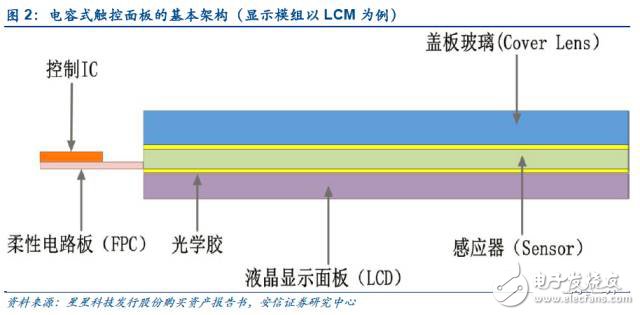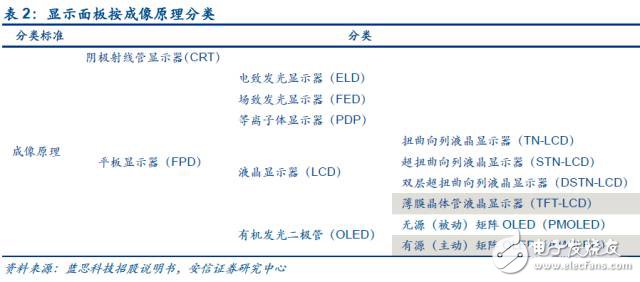
Privacy statement: Your privacy is very important to Us. Our company promises not to disclose your personal information to any external company with out your explicit permission.

HuiZhou GreenTouch Technology Co.,Ltd

![]() April 05, 2023
April 05, 2023
Today, touch technology has become an important interaction method for mobile smart devices, but all technologies are not at a glance. We have experienced the transition from resistive screen to capacitive screen. With the rumors of the iPhone 8 carrying OLED panels, we can't help but ask the OLED era?
The touch panel originated in the 1960s and was developed by the US military for military use. After more than 50 years of development, the Touch Screen has been widely used, but it really entered maturity after 2000, before 2007. Mainly based on resistive screen. With the launch of the first iPhone with a capacitive screen in 2007, Apple officially kicked off the era of smart phone capacitive screens.
From the resistive screen to the capacitive screenCompared with the resistive screen, the capacitive screen supports multi-touch operation mode, and has advantages in sensitivity and light transmittance. At present, it has basically replaced the resistive screen in the 3C field and become a 3C product such as a smart phone or a tablet computer. The standard configuration, and the market of resistive screens are currently mainly concentrated in industrial control panels, car touch screens and Other fields.

The capacitive touch panel is mainly composed of a touch panel module and a display module, wherein the touch module includes a cover glass (Cover Lens), a touch sensor (Touch Sensor), and a control. IC (divided into two types: touch IC and display IC); there are two types of display modules: The first type is the current mainstream LCM (the display module formed by laminating the liquid crystal display LCD and backlight together) The second type is OLED (Organic Light EmitTIng Diode), which is currently rapidly replacing LCM in the mobile phone field.

In order to more clearly depict the industry's changing trends, we will sequentially sort out the core components such as display module, touch sensor and cover glass in the order of upstream and downstream.
Display module: from LCM to OLEDAccording to the imaging principle, the display panel can be divided into two types: a cathode ray tube display (CRT) and a flat panel display (FPD). According to different display media and working principle, flat panel displays can be further divided into electroluminescent display (ELD), field emission display (FED), plasma display (PDP), liquid crystal display (LCD), and organic electroluminescence display (OLED). Five categories, of which liquid crystal display can be divided into TN-LCD, STN-LCD, DSTN-LCD, TFT-LCD four.

TFT-LCD has dominated the display panel market for more than 15 years.
OLED technology developed in the 1980s, and commercial applications began in the 21st century. The advantages of OLED compared to TFT-LCD technology are undoubtedly obvious, but the core reason why it has not been able to achieve industrialization is that the preparation process is not perfect, the yield is too low, and the production cost is difficult to control. According to IHS data from the global industrial data and analysis organization, in the first quarter of 2016, the production cost of the 5-inch resolution 1080p AMOLED display panel has been reduced to about $14.30, while the cost of the same specification LTPS-TFT-LCD panel. It is $14.60.
![[Depth] Touch full industry chain technology detailed analysis and market analysis](http://i.bosscdn.com/blog/21/60/27/5-1F112113119233.jpg)
Since the TFT-LCD process is very mature, the space for cost reduction is very limited. In the future, with the continuous advancement of technology and the scale effect of OLEDs, the production cost of OLED panels will further decline in the future. Samsung's continuous investment and research and development of OLEDs, in the past two years, the OLED's past problems of heavy grain, unreal color, low life expectancy have gradually improved, and the number of mobile phones using OLED screens has increased significantly.
Article reference photoelectric display
The above is the A brief history of the development of LCM to OLED touch screen we have listed for you. You can submit the following form to obtain more industry information we provide for you.
You can visit our website or contact us, and we will provide the latest consultation and solutions
Send Inquiry
Most Popular
lastest New
Send Inquiry

Privacy statement: Your privacy is very important to Us. Our company promises not to disclose your personal information to any external company with out your explicit permission.

Fill in more information so that we can get in touch with you faster
Privacy statement: Your privacy is very important to Us. Our company promises not to disclose your personal information to any external company with out your explicit permission.